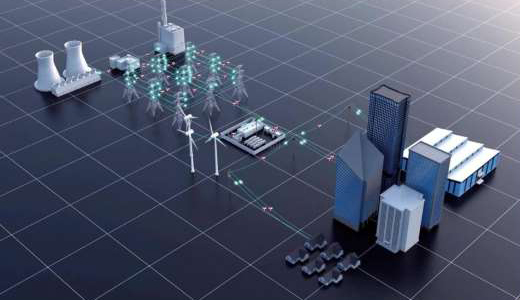
Dedicated Commercial & Industrial ESS
Container Energy Storage System
- High Performance and Fast Response Cooling system
- Safety Escape Indicator
- High Safety and Long Life Battery and Protection System
- High-performance Fire Extinguisher
- Stable and Eficient Power Converter System
- Highly Sensitive and Fast Response Fire Control system
- 24/7 Monitoring
- Low-energy Ventilator

Overview of Energy Storage System Applications
Grid-side/Generation-side/User-side
Grid-side: Energy storage systems balance the load on the power grid, improving its stability and reliability. They store energy during low demand periods to meet high demand during peak periods.By cutting peaks and filling valleys,they can alleviate the contradiction between supply and demand, reduce operating costs, monitor load fluctuations, and quickly respond to grid dispatches to improve frequency stability.
Generation-side: Energy storage systems improve the efficiency of renewable energy utilization and resolve issues of electricity fluctuation and instability. These systems store excess energy and release it when needed to ensure a steady supply of energy. They also improve the stability of new energy output and transient power impacts on the grid, thereby enhancing the quality of electric power.
User-side: Energy storage systems improve energy utilization efficiency and save energy consumption. For instance, solar power panels store energy during the day for use at night or during cloudy and rainy days to reduce costs. They also smooth out power delivery, increase capacity utilization, reduce transformer requirements and basic electricity fees, and generate economic benefits based on differences in peak and off-peak electricity prices.
Off-grid/Microgrid Applications
Off-grid: Off-grid system is an independent energy system that does not rely on traditional power grids. Energy storage systems typically work with renewable energy devices (such as solar panels and wind turbines) to provide safe, clean, and reliable electricity to remote or geographically challenging areas while effectively reducing power supply costs.
Microgrid: Microgrid system is a distributed energy system connected to the power grid and operates in collaboration with it in a small area. It can improve autonomous power supply capability, reduce dependence on the grid, and balance loads through energy storage systems. As one of the core equipment of microgrid systems, energy storage systems ensure a smooth and reliable energy supply. Additionally, they optimize scheduling and improve the safety and stability of the grid through intelligent control.
Distributed ESS in Station Area

Features:
- Dynamic capacity increase of transformer in station area;
- The peak valley arbitrage;
- Emergency power supply guarantee;
- Three-phase unbalance treatment;
- Reactive power compensation.

Energy Storage System — Cloud Platform
Real-time monitoring and second-level response
High-speed data communication, second-level refresh and real-time monitoring of battery data, and visual graphics to display the operating status.
One-click inspection, intelligent operation and maintenance
The platform supports one-click inspection, real-time analysis and diagnosis, smart push of online operation and maintenance strategies and offline maintenance work orders, effectively improving the efficiency of operation and maintenance.
Data aggregation centralized display
All functions are presented as menus, which can be quickly returned or switched on any interface. The operation is simple and convenient greatly reducing the workload of operation and maintenance.
Integrated Design Flexible Expansion
Following the custom-designed structure, it is highly integrated and advanced, safe, efficient, and highly reliable. It has good structural scalability and is easy to expand and develop.
Virtual Power Plant

In the field of energy storage, VPP can effectively integrate and optimize various distributed energy storage systems, improving the stability and flexibility of the power grid: Demand-side management: VPP can smooth power demand fluctuations by controlling the energy storage devices connected to the system, reducing the peak load of the power grid and thus reducing pressure on the grid.
Frequency regulation and voltage support: VPP can use energy storage systems to quickly respond to power grid frequency and voltage fluctuations, helping to maintain stable operation of the power grid. Energy trading and market participation: VPP can integrate distributed energy storage systems into the energy market, participate in power trading, and create revenue for system owners. Integration of renewable energy: VPP can balance the intermittency and instability of renewable energy through energy storage systems, improving the penetration rate of renewable energy in the power grid.Emergency backup and power supply guarantee: In the event of a power grid failure or emergency, VPP can use energy storage systems to provide emergency backup power for critical loads, ensuring the reliability of power supply.
At ADAMAR, we are dedicated to empowering sustainable living with innovative energy solutions. From advanced battery storage systems to seamless solar integration, we help you harness the power of renewable energy for a greener future.
Get in Touch
- +64 9555 2277
- +64 2181 1234
- info@adamardesgins.com

